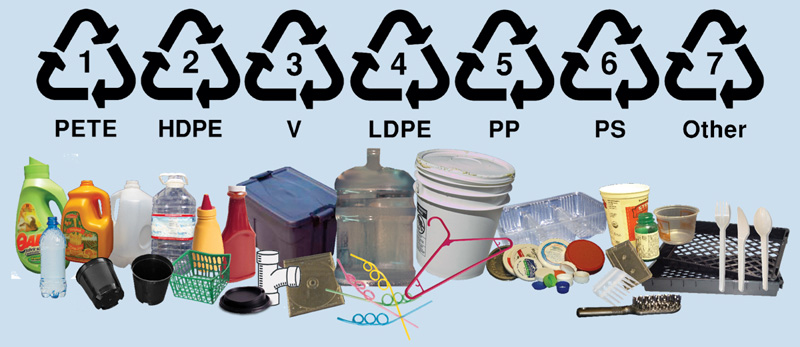The Realities of Plastic Recycling
Recycling plastic can be a bit confusing. What is, and is not, acceptable can change from month-to-month – and the change can be dramatic depending on where the plastic is being sent to.
Plastic collected in the San Juans currently goes to a Waste Management sorting facility north of Seattle. They take more plastics than many other facilities. In fact, it’s easier to list what they DO NOT take:
UNACCEPTABLE:
- Bubble wrap
- Styrofoam
- Packing foam
- Anything tied up in opaque plastic bags
- PVC pipe, any kind of commercial / industrial pipe or tubes
- Anything with significant food contamination
Everything else, as long as it’s clean is fair game. That means:
ACCEPTABLE:
- All plastic code numbers 1-7 (check regularly on local rules on recyclability of some plastics)
- All types of plastic nursery pots and trays (clean)
- All types of plastic film and plastic bags when BUNDLED TOGETHER
The bottom line is that while plastic is recyclable, it’s still not a good thing for the environment. Every time a plastic item is recycled, it degrades to a lesser form. That means even the highest grades of plastic (1, 2 and 3) are still only recyclable a few times—as opposed to an aluminum can which is almost infinitely recyclable.
Another problem is that only a small fraction of the plastic containers that are made ever get recycled. According to an organization working to ban plastic water bottles, only 23% of them are ever recycled at all.
Most plastic ends up in land fills, and lots of it escapes into the environment where it become a toxin. When they get into rivers lakes and oceans they break down into smaller and smaller bits and frequently are ingested by wildlife. The worst cases of this are occurring in the central Pacific Ocean, in the ‘gyre” where millions of tons of plastics are swirling around in circular ocean currents.
Worst of all, much of the garbage in the world is still incinerated. Burning plastic can concentrate the toxins in plastic, and introduce the worst thing of all—dioxin—into the atmosphere.
Another problem is Styrofoam. Extremely hard to recycle, Styrofoam disintegrates quickly becoming a toxin faster than most other plastics. It also is a major source of litter, because its light weight allows it to be blown far and wide by the wind.
We are surrounded by plastics. A world with no plastics is virtually inconceivable. However, there are things we can do. Individually, we can find lots of ways to not use plastic; and in particular not use disposable plastic products whenever we can avoid them. As a community we can continue limiting the use of styrofoam products and plastic bags.
Industry-wide, manufacturers of plastic products and packaging need to be held accountable for the garbage they produce. Many products made from cheap, plastic compounds (the 5s, 6s, 7s) could be made from the slightly more expensive plastics (1s, 2s, and 3s), thus improving recyclability. In fact—do we really need 7 (or more) types of plastic? If there were fewer types, far more would be recycled as the sorting process would become easier.

